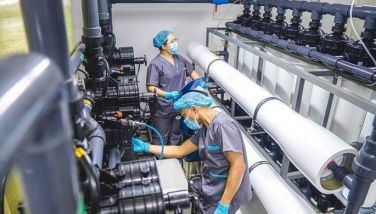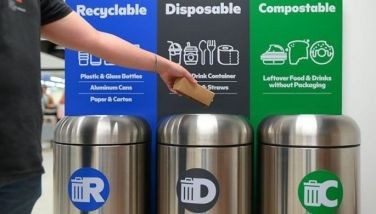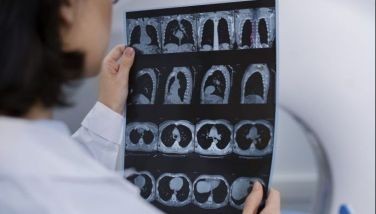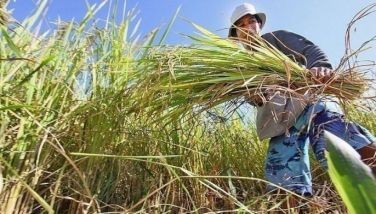Visayas State University develops new technology to increase prawn production
MANILA, Philippines - The Visayas State University (VSU) in Baybay City, Leyte plans to put up more prawn hatchery facilities to help local growers produce more and avail of the huge export opportunity for prawns.
VSU has developed a technology for increased production of prawn and other commodities following a model of an outstanding farmer, Benjamin G. Gerona Jr.
Gerona added freshwater prawn or “ulang” growing on top of his existing vegetable crops and tilapia. He had a return on investment of 32 percent on his P34,400 investment.
A multi-commodity enterprise as a development strategy is being supported by the Bureau of Agricultural Research (BAR) to help maximize the income of farmers.
VSU researchers Veronica L. Reoma, Nestor O. Morales, and Tamar Mejia, in the study filed with the BAR, discovered that Gerona’s multi-enterprise system could enable farmers to maximize their earnings.
When prawn growing was integrated into farms, studied farms earned a net income of P3,474 in the first cropping, P12,890 in the second cropping, and P16,182 in the third, for a total income of P32,497.
This was based on the VSU-Southern Leyte State University (SLSU) study called “Integrated Giant Freshwater Prawn and Vegetable Production.”
“The production of high value products like prawn will significantly raise farmers’income. And diversifying sources of farm income is something that BAR supports,” said BAR director Nicomedes P. Eleazar.
VSU’s College of Fisheries has started planning for hatchery expansion since demand for prawn product in Leyte alone has been brisk.
“Farmers could not accommodate demand for prawn. They proposed that they should be taught to put up their own hatcheries which will raise supply of fries,” Reoma said. “We are considering to expand the hatchery in strategic areas where it can be more available for farmers for ease of transportation.”
VSU is seeking an intensified partnership with BAR on a proposed integrated prawn production.
VSU targets the local market for prawn, while the nearby export market in Japan awaits huge export opportunities for Filipino prawn producers.
Although its prawn or shrimp consumption in general has been declining, Japan’s shrimp import value was placed at $1 to $2 billion annually up to 2010.
The Philippines ranked fourth as shrimp exporter to Japan in the 1990s, with a seven percent share. It was just next to Thailand, Indonesia, and China.
But diseases hitting shrimp production and farmers’ inability to keep up with quality, such as size of the prawns, caused Philippines prawn exports to eventually decline.
Thailand was, thus, able to prevail as the world’s largest shrimp exporters with Thai shrimp export value reaching $2 billion yearly or 20 percent of the world market.
A replication of Gerona’s systems in his farm in Sogod, Leyte may help freshwater prawn production in many suitable areas in Leyte and other Visayas provinces and, in turn raise national prawn production.
“The technology on freshwater prawn is not yet popularized in Leyte island due to the lack of prawn fingerlings. But the net return in prawn culture and the demand could energize the farmers to shift from tilapia alone to prawn with vegetables along their ponds as trellis and shades for their pond,” said Reoma.
The multi-enterprise commodity system of Gerona involves a 300-square-meter (sq.m.) pond for the first cycle, two 300 sq.m. pond on the second, and one 300 sq.m. pond on the third cycle.
For feeds, Gerona used prawn commercial feeds mixed with crushed golden kuhol (apple snails), fish trashes, and some leftovers.
The system becomes multi-commodity with the planting of viny vegetables such as “upo” and squash.
The trellises from the viny vegetables complements the growing of prawns as they provide shade, increasing the yield and income of farmers.
An important recommendation of the VSU researchers is for the integration of production of freshwater prawn fry or seed as part of technology for which farmers should be trained.
This will ensure that farmers will have easy access to seed supply and that they may also have this in disease-free form since disease may cause a major loss for prawn farmers.
- Latest



























